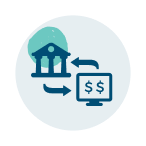Three Reasons Why
Guest Blog Author Shannon Doyle is program manager for partnerships and financial education with LSS Financial Counseling
Do you know what your credit card interest rate is? Many people I speak with aren’t even sure where to find the interest rate, also known as the annual percentage rate or APR, on their monthly credit card statement. At one point in my life, neither was I. Hint: It’s typically buried on the second or third page of your official statement. You are unlikely to find it listed anywhere on the summary page of your online account.
This lack of knowledge is not surprising, but it is alarming. Here’s why you should pay attention to your credit card interest rate.
Your APR determines how much it costs you to use your credit card
Currently, the average interest on a bank credit card rate is 21.5 percent, according to the Federal Reserve — the highest interest rate ever recorded by this organization.
That means that if you are carrying a $6,000 balance on a credit card from month to month, you pay about $107 in interest each month — about $1,284 per year, depending on how your credit card company handles compounds interest. Read this article at NerdWallet.com for a great description of how credit card interest is calculated.
Now imagine that you are paying a minimum payment of around $120 per month (2% of your balance, which is typical). With each payment, $107 is going to interest, and just $13 is going toward your balance that month. If you never add another charge to that card and only pay the minimum payment each month, you will spend nearly 11 years paying off the $6,000, and you will pay $10,000 in interest on top of that. If you have a retail charge card — which has an average interest rate of 30.16% — the balance would not be paid off for more than 22 years if you just make minimum payments, and you would spend more than $34,000 in interest!
Balances have jumped, while savings rates have plummeted
At the end of 2023, Americans had more than $1 trillion in credit card balances. That’s just under the amount owed on student loan debt and on auto loan balances. While credit card balances have risen, emergency savings rates have dropped, leading many households to have more credit card debt than emergency savings. At the same time, credit card delinquency rates have risen to a level not seen since 2012. This puts American consumers in a precarious situation, and they often make credit card payments instead of contributing to savings. A lack of savings can create a cycle of increasing debt in many households, where they must pay for emergencies with credit card debt instead of savings, increasing their credit card balances even further.
You’re stealing from your future to pay for yesterday
Imagine you’re the average credit card borrower and are carrying $6,000 balances on three different credit cards. If just one of these is a retail card, you will pay close to $34,000 in interest over 22 years on top of the $6,000 you borrowed. If you took that same amount of $6,000, invested it in a traditional Individual Retirement Account with an average 7% return, and never contributed another dime to it, in 22 years you would have $26,582.41 in your pocket instead of giving it to the credit card company. Hello new car, college savings, small business, or retirement funds! You get the picture.
Tackle your credit card debt
If you are carrying balances on your credit cards from month-to-month, you need a plan now to pay them off. Grab your statements, find your APR, and use this credit card interest calculator from Calculator.net to figure out how much money is going out each month.
Here are some strategies to avoid the high cost of interest on credit cards:
Pay bills in full each month, and on time. Avoid high interest rates altogether by paying your balance in full every month. Your FICO score — or the most common way to determine your credit score — also considers your payment history and late payments that not only lower your credit score but can stay on your record for more than seven years. So, even if you’re only paying the minimum, make sure payments are timely.
Implement the power payment method. If it’s not possible to pay your monthly credit card balance in full, pick your priority debt to pay off. This could either be the card with the lowest balance (to have fewer payments), or the card with the highest interest (to save money on interest.) Pay as much extra on the priority debt as you can, while paying the minimum payments on any other debt, until the priority debt is paid off, then add that total payment to the next card in line.
Consider a Debt Management Plan. By creating a Debt Management Plan (DMP), you can typically lower your monthly payment and reduce interest rates on your credit cards so that you can pay off your debt more quickly. Together, these two strategies will save you thousands of dollars in the long run.
| Schedule a free appointment by calling 888.577.2227 or emailing us. You can also start an online appointment by creating a financial profile. Members of North Star Credit Union have access to six free financial counseling sessions annually. Mention that when you reach out. |




